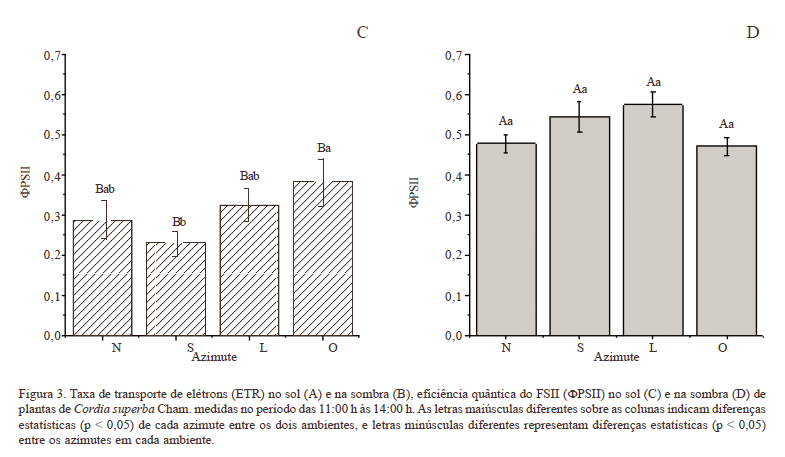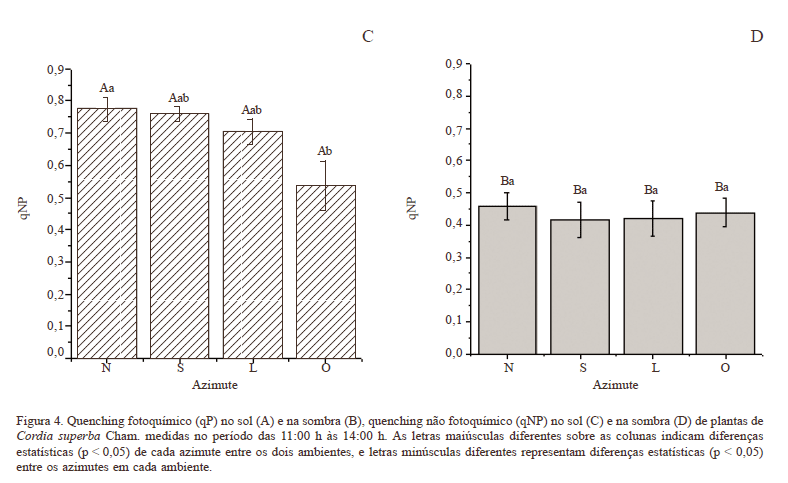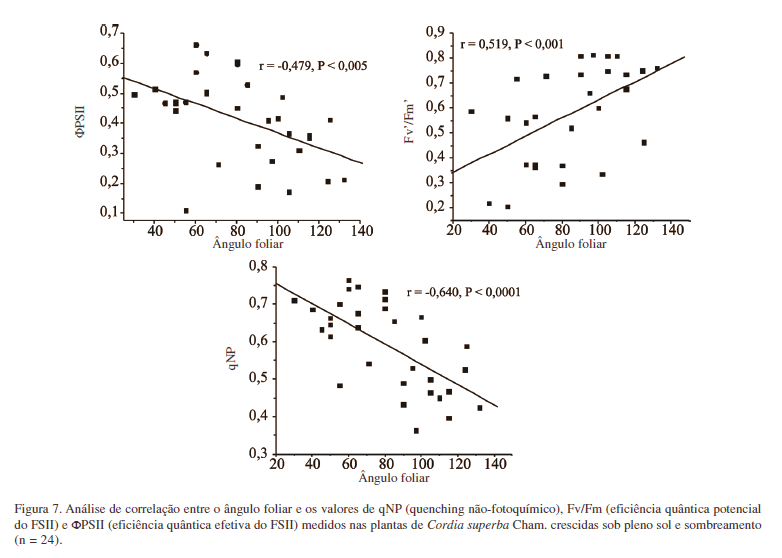Photosynthetic light utilization plays a major role in species distribution along gap regeneration gradients. The aim of this study was to evaluate strategies of light utilization and the possible influence on developmental stability of seedlings of the woody pioneer species Cordia superba grown under contrasting light environments. To this end, an experiment was carried out with 12-month-old C. superba seedlings grown under full sunlight and under 85% shade. Physiological aspects such as plant growth and chlorophyll fluorescence, and canopy architecture traits such as leaf angle and leaf area index were analyzed. A developmental stability analysis was also performed by leaf symmetry measurements. The results showed that C. superba seedlings have the capacity to develop different phenotypes in response to contrasting light availability, showing sun and shade plant traits according to respective growth environments. However, the plants grown in full sunlight showed more symmetric leaves than leaves developed in shade conditions. This suggests that, despite the greater environmental heterogeneity of full sunlight in relation to a shade environment, the status of pioneer species of C. superba seems to be a well developed adaptive trait allowing plants to develop a stable phenotype in a changing environment
canopy architecture; chlorophyll fluorescence; phenotypic plasticity; symmetry












